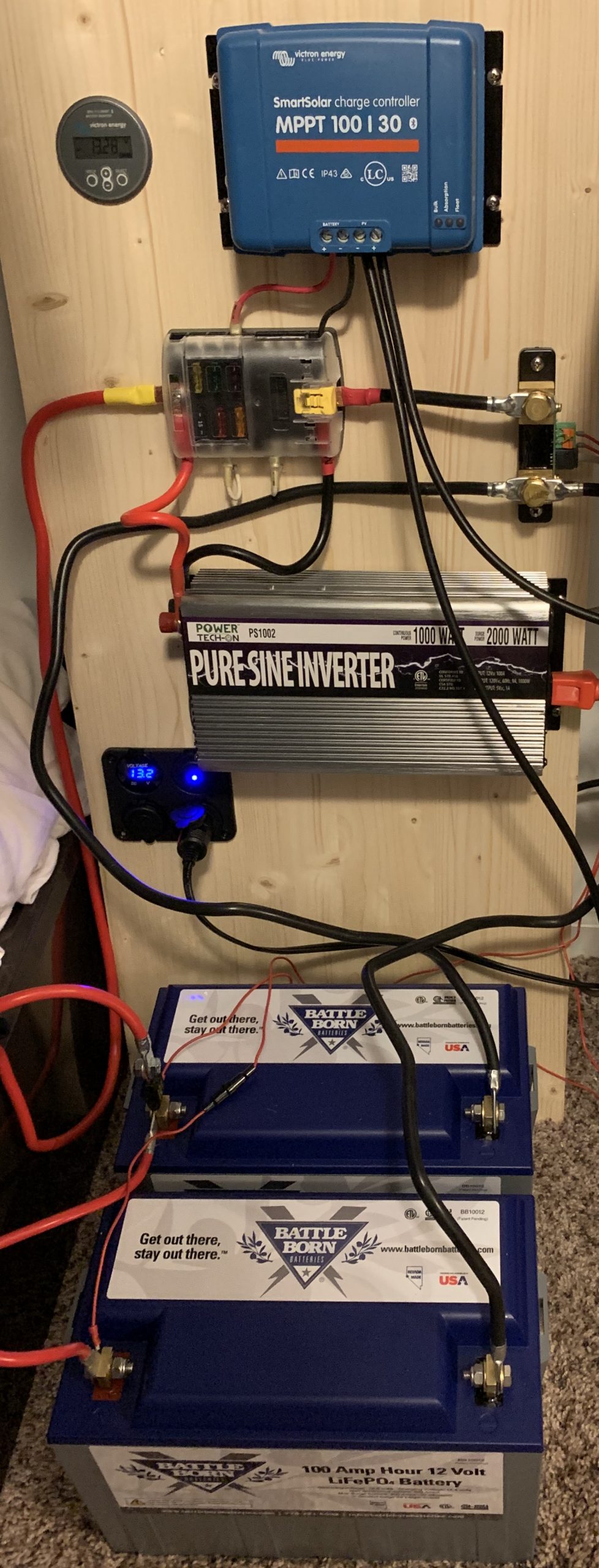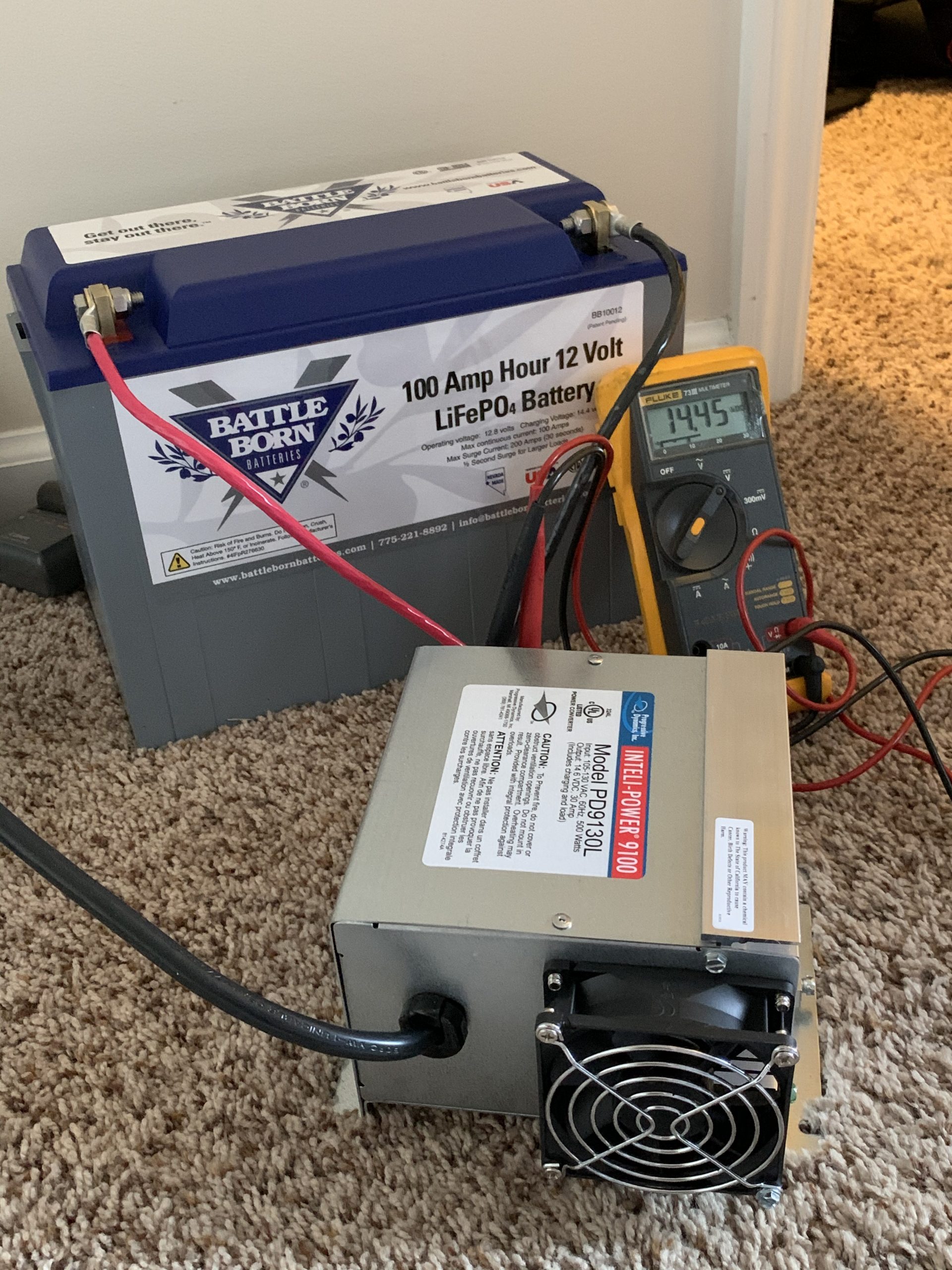Okay, I’m new at this Solar thing and far from an expert but I have learned a few things. My goal was/is not to go off grid, it is simply to power most of the items in my bedroom with solar to stretch out gasoline for the generator in a power outage situation such as with the two hurricanes I’ve experienced since moving to Eastern North Carolina. Secondly I’d like to save a few bucks on the electric bill, and thirdly I get a kick out of doing stuff like this.
My basic goals for solar are:
- Power a TV and Firestick for entertainment
- Power a small portable refrigerator
- Power a Shortwave receiver with an active (powered) antenna
- Power an LED lamp
- Power a 12v fan
- Power a battery recharge station to keep AM/FM/Shortwave radios powered
- Save a few bucks (with the understanding I’ll probably never recoup the cost of all this stuff)
I call this my lifeboat. Here are a couple of things I have learned so far.
I started out with 2 solar panels which were ground mounted and could be moved around.

Two Renogy 100 watt solar panels
100 watts each. I kind of thought 200 watts would be enough to charge my batteries during the day. And they are with some exceptions. They are:
- I have to COMPLETELY remove the load. The inverter has to be shut off and the 12 volt refrigerator has to be moved to shore power. THIS IS NOT WHAT I INTENDED.
- I have to have almost a full day of cloudless skies. The battery will top off about 2 or 2:30 PM
- I have to move the panels a few times a day to maximize the wattage produced by the panels.
Those things are NOT quite what I had in mind and they got worse when I made a permanent mount facing South and just ever so slightly SouthWest. Maybe 185 degrees.

Renogy 4 panel mounting system
As it stands today I have had a perfectly cloudless day and with the load applied and at about 2:30 PM I have not topped off my batteries, nor will they get topped off today. They are close at over 13.5 volts and totally full is at 13.6 volts after a surface charge hitting 14.6 volts.
So being unable to kick the panels around to follow the sun made a bit of a difference. The first major lesson I learned is:
200 watts of input solar panels is NOT enough for my situation.
So you may have noticed I have a 4 panel mount. Two more panels are in the mail and should be here in a day or two. I’m almost positive that I can leave the system loaded and that it will still top off the batteries almost every day that has some sunshine with 400 watts of input power.
The next lesson I learned is:
200 watts of solar panels will NOT get you 200 watts of power.
In PERFECT sunlight with the perfect angle the most wattage I have seen is 183 watts. Theoretically 4 panels in parallel should produce about 360 watts in perfect conditions. Again, I’m fairly certain that will get me over the hump where the battery charge stays at around 13.55 volts. As it creeps towards 13.6 the refrigerator compressor kicks in and pulls it back down. In other words……..as soon as I make the power, it gets consumed.
Next lesson I learned is:
A 1000 watt pure sine wave inverter is MORE than enough for my needs. No need to buy larger. Your mileage may vary. For what I’m doing it is plenty. I can even run a heat gun on low off this thing.
And yet another lesson:
12 volt outlets with lights and voltmeters and LED’s that show you they are on are cool however they are parasitic and those lights consume power. Not a lot, but they consume power. Adding UNSWITCHED OUTLETS is worth doing.

Switched and Unswitched Outlets
No reason to have lights on if you don’t need them.
Here’s one of the best lessons I learned:
Even when you think everything is off, you are still going to pull some power. When my inverter is on and everything I power is just plugged in I pull about 19 watts of power.
That is LED’s on bricks. Amazon Alexa pulls a few watts. Spying takes power you know. The brick that powers my shortwave receiver pulls a few watts even if the radio is off……..and so on and so forth. Which leads me to another lesson:
If you are in maximum conservation mode you should unplug items that you are NOT actually using. At a minimum place those things on a separate power strip.
For example: I’m not going to watch TV and listen to shortwave radio at the same time. The TV pulls zero watts unless it is on, and then it pulls about 45-50 watts. Having the TV on and the shortwave radio pulling a few watts while I’m not using it is kind of counter productive. Active antennas don’t need to be powered unless the shortwave radio is on either.
Makes sense?
Anyway here is my build (so far)

New Solar Build for my Master Bedroom
It consists of:
- 400 watts of solar panels
- Victron MPPT Charge Controller (100 volt, 30 Amp). Since upgraded to 100 volt 50 amp
- Victron BMV-712 Smart Battery Monitor
- 6 position fuse block
- 1000 watt pure sign wave inverter. Since upgraded to 2200 watt pure sign wave inverter
- Several 12 volt cigarette lighter style output ports
- USB outlets for charging phones, tablets, etc. (same as above)
- 2 – 100 amp hour Lithium BattleBorn Batteries (LiFePO4)
I think I’ve built a cool system that does EXACTLY what I want it to do, but I think it needs just a hair more input power to keep my batteries topped off or to get them topped off fully even on cloudy days with minimum sunshine.
Given my consumption I can do the kinds of things I want to do for about 3 days with no recharging. This leads me to my LAST LESSON I’VE LEARNED:
Buy a battery charger! I bought a Progressive Dynamics PD9130L charger.

PD9130L Charger
I have a whole house generator. In case there is no sun I can fire up the generator and charge my battery bank in a flash. Having a back up to the fickle sun is a good idea, I think. And again in a power outage situation I can shut down the generator at night and live off the solar “farm” thereby saving precious gasoline. Heck I bet I have enough power left over in this solar rig to run my new EnergyStar refrigerator. Might have to run a long power cord through the house but you do what you gotta do when the power is out.
Have fun. If you’re new at this or just planning on jumping into solar I hope you learned something.
